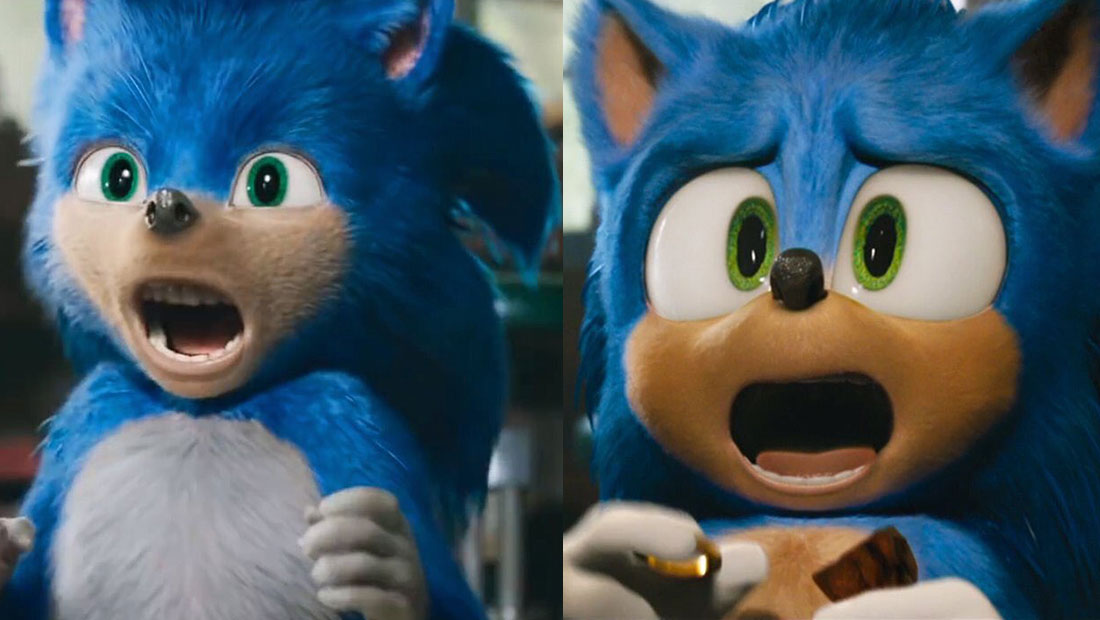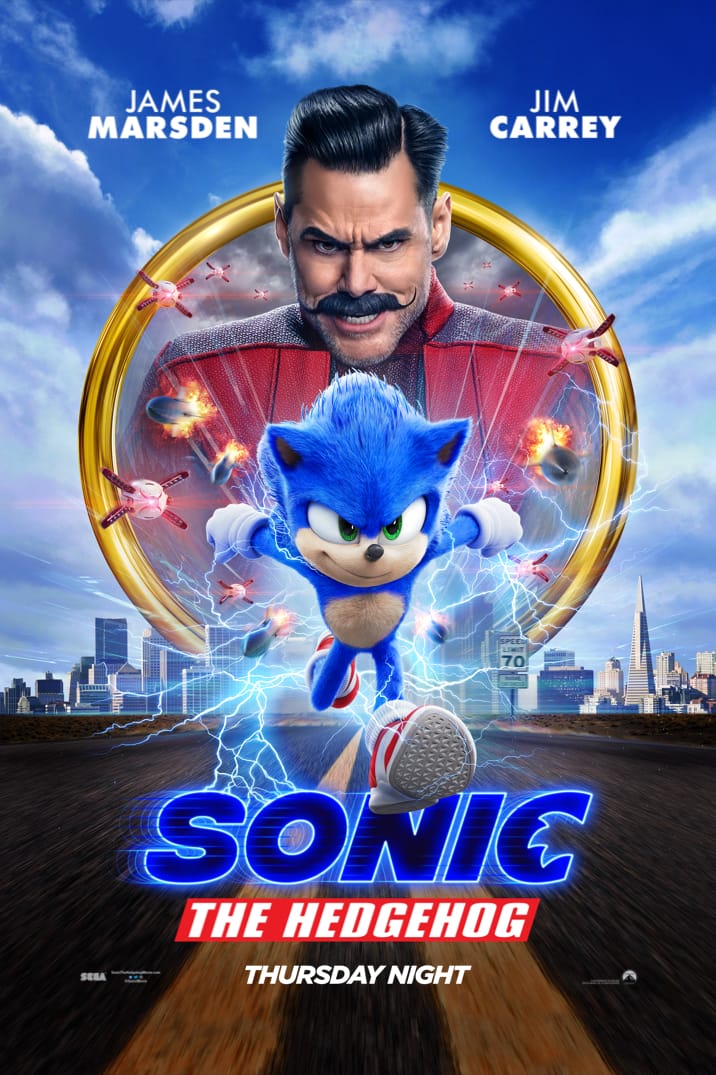

‘Sonic The Hedgehog’ Is Set To Speed To The Top Of The Box Office
Its hero may move at lightning speed, but Sonic the Hedgehog took its time to reach the big screen. The movie is coming out today, after a tortuous production process and a three-month emergency delay.
Considering the setbacks, the film opens with decent commercial prospects. It is forecast to gross upward of $40 million domestically, from 4,130 venues, across the four-day weekend; Box Office Pro projects as much as $55–$66 million. These figures would be enough to place it at the top of the Presidents’ Day box office.
The hybrid feature is based on Sega’s wildly popular game franchise, whose heyday was in the 1990s. It therefore has a dual audience, appealing to both kids and nostalgic millennials. The release has been aided by a big marketing push from Paramount Pictures and the relative dearth of family fare since the start of the year.
Meanwhile, Sonic the Hedgehog is also opening in 41 countries overseas, although that number doesn’t include two major markets: Japan (Sonic’s homeland) and China. The film is due to open in China on February 28, but its release has been jeopardized by the continuing threat of the coronavirus, which has caused almost all the country’s theaters to shut down.
The film has been a long time coming. Sega reportedly sold the rights to Sony Entertainment in 2013, but the project stalled and was put into turnaround. Paramount rescued it in 2017, preserving much of the production team, and the release date was eventually set for November 8, 2019.
That changed after the launch of the first trailer last April. Many Sonic fans — and even non-fans — were aghast at the cg hedgehog’s awkward design, and took to social media to say so. In response, the character was redesigned and the release was delayed to accommodate the extra production work. Jeff Fowler, the director, addressed the controversy on Twitter:
Thank you for the support. And the criticism. The message is loud and clear… you aren't happy with the design & you want changes. It's going to happen. Everyone at Paramount & Sega are fully committed to making this character the BEST he can be… #sonicmovie #gottafixfast 🔧✌️
— Jeff Fowler (@fowltown) May 2, 2019
The redesign was led by Tyson Hesse, an artist closely associated with the Sonic franchise. According to Indiewire, it added approximately $5 million to a budget in the vicinity of $90 million. The result placated the public, although the fiasco raises important questions about the influence of public pressure on filmmaking.
Sonic the Hedgehog is Fowler’s feature directorial debut (he was previously best known for his Oscar-nominated animated short Gopher Broke). The production setbacks are yet another reminder of the risks of assigning a vfx-laden feature to a filmmaker with little experience making them. Other recent examples include Tom Hooper on Cats and Stephen Gaghan on Doolitle.
Fowler directs from a screenplay by Pat Casey and Josh Miller. The cast includes Ben Schwartz, James Marsden, Jim Carrey, Tika Sumpter, Adam Pally, and Neal McDonough. The producers are Neal H. Moritz, Toby Adcher, Toru Nakahara, and Takeshi Ito, and the executive producers are Hajime Satomi, Haruki Satomi, Masanao Maeda, Nan Morales, and Tim Miller. The animation and vfx were handled by Blur Studio, Digital Domain, Industrial Light & Magic, and MPC.

The film’s critical reception has been tepid — at the time of writing, it holds a 63% score on Rotten Tomatoes.
Robbie Collin of The Telegraph speaks for many in praising the new-look Sonic, but takes issue with the production design on the whole:
You might also imagine that in a Sonic the Hedgehog film, speed would be of the essence, but there are relatively few scenes in which we get to race with our hero at full tilt: he’s more often shown at a distance; just a blue streak snaking around oddly drab real-world backdrops.
In a two-star review, Time Out’s Michael Gingold laments the dull script, but singles out Jim Carrey’s performance for praise:
The one wild card is Carrey, clearly revelling in the chance to revisit the self-possessed, sarcastically comic pose with which he made his name. Every so often, when the script allows, he gives Sonic the Hedgehog the jolt of silliness it’s crying out for. But it’s not enough. Paramount famously reworked Sonic’s initially teeth-sporting look when the first trailer triggered something akin to online panic; perhaps fans should have been consulted on the script as well.
Writing in Vulture, Bilge Ebiri agrees that Carrey is fun, and adds that the film feels old-fashioned on the whole:
This year’s Sonic the Hedgehog could have been the biggest hit of 1996, in ways both good and bad. From the movie’s shopworn one-liners, to the un-ironic use of the “Yup, that’s me, now you’re probably wondering how I got here” freeze-frame meme, to the spectacle of Jim Carrey (finally, thankfully) being Jim Carrey again, to the random Olive Garden jokes, to the fact that we’re watching, y’know, a Sonic the Hedgehog movie… the whole project feels like it was written, conceived, and green lit decades ago… Jeff Fowler’s film still has a modesty that feels like a throwback to a simpler blockbuster era.
Owen Gleiberman argues in his Variety review that the film isn’t sure who it’s addressing:
For all the borderline tedium I felt at Sonic the Hedgehog, I do realize that this is a picture made for 8-year-olds. And they’ll probably like it just fine. Yet I would also call the overly kiddified tone of the movie a mistake. The protesters who rallied for the changes in Sonic’s design… were not 8-year-olds. As a movie hero, Sonic could, and should, have been hipper and sharper, less megaplex arrested. Even as they fixed his face, the filmmakers strove so hard to make him “likable” that they never figured out a way to make him cool.


